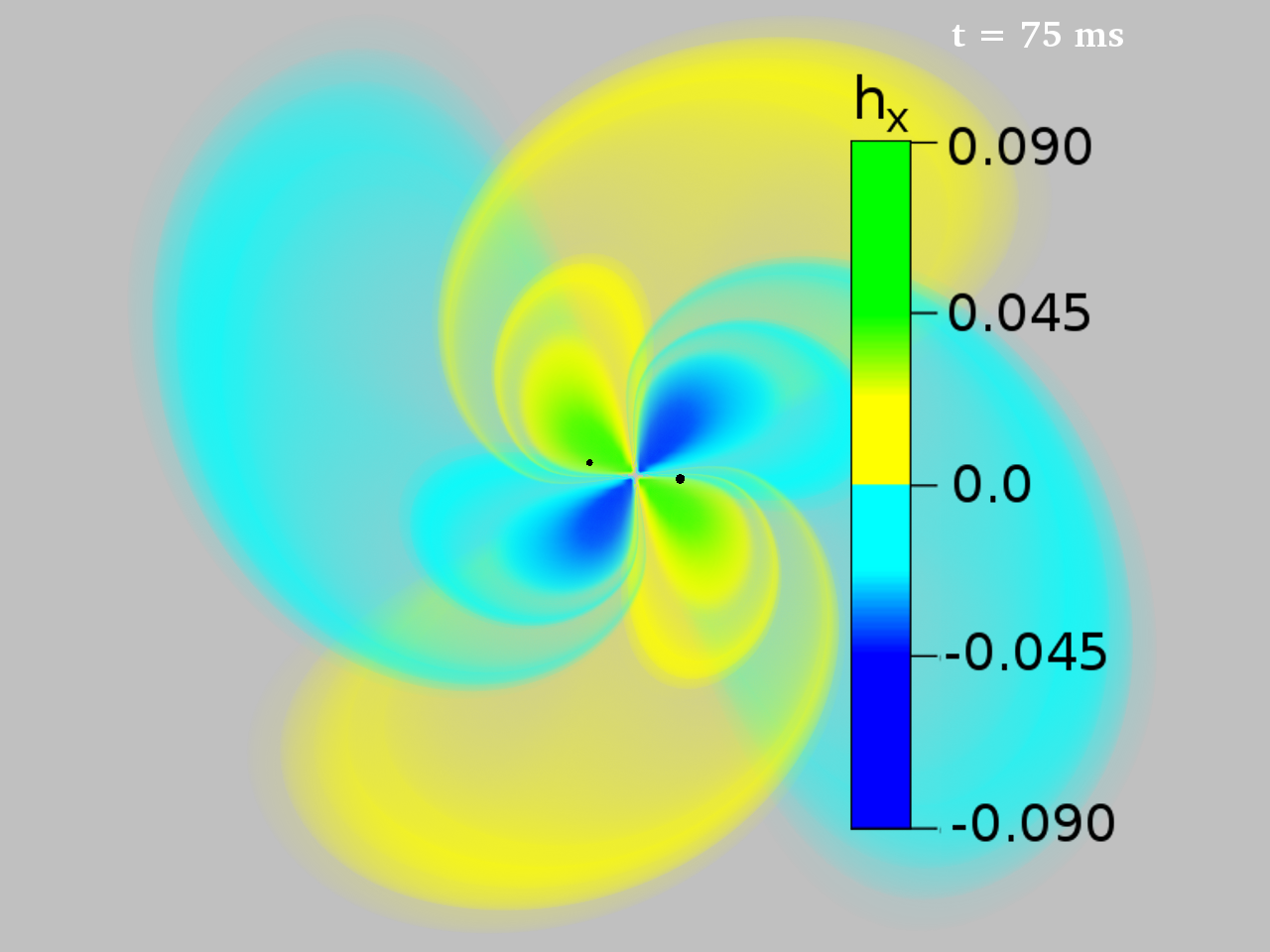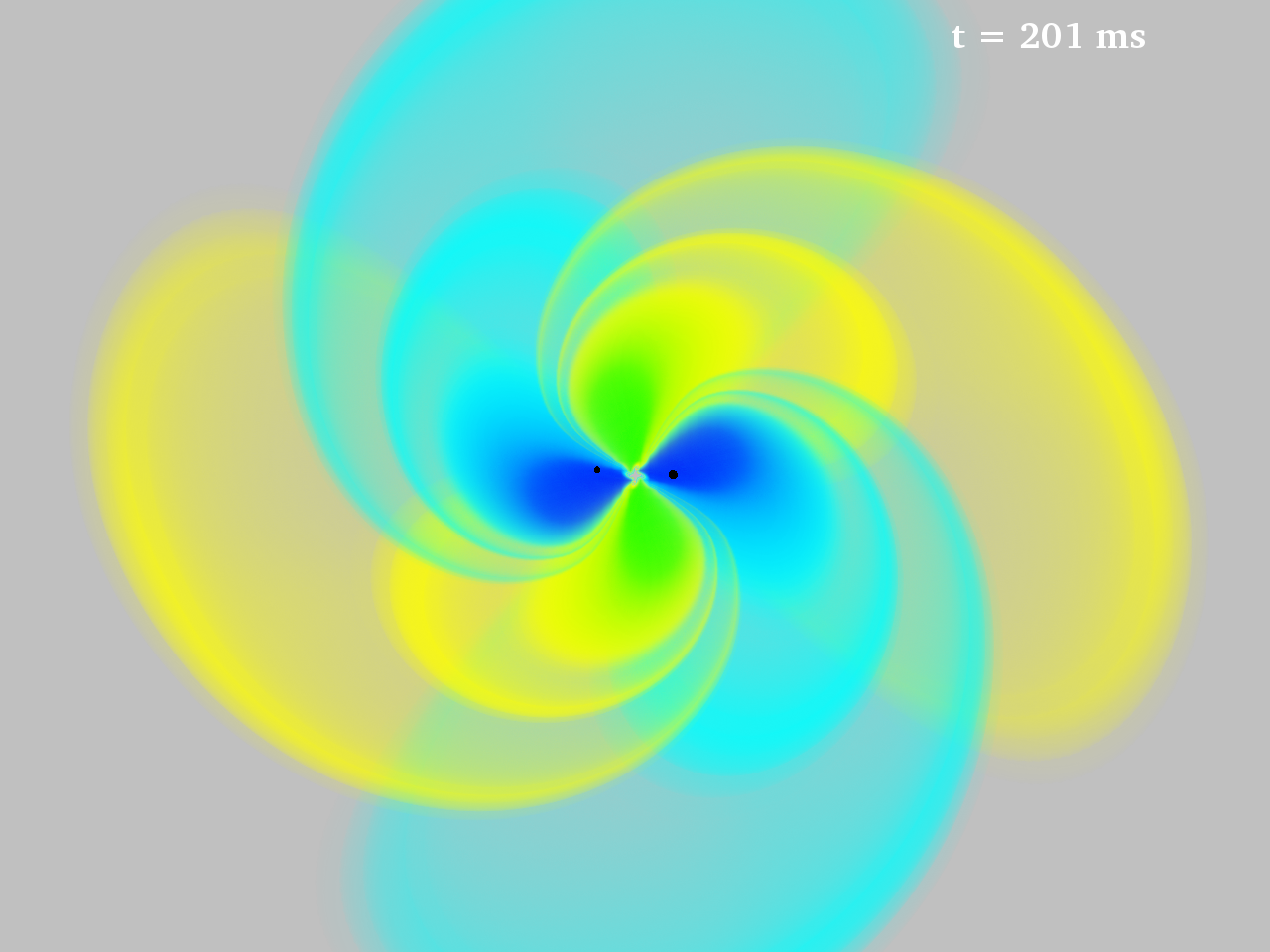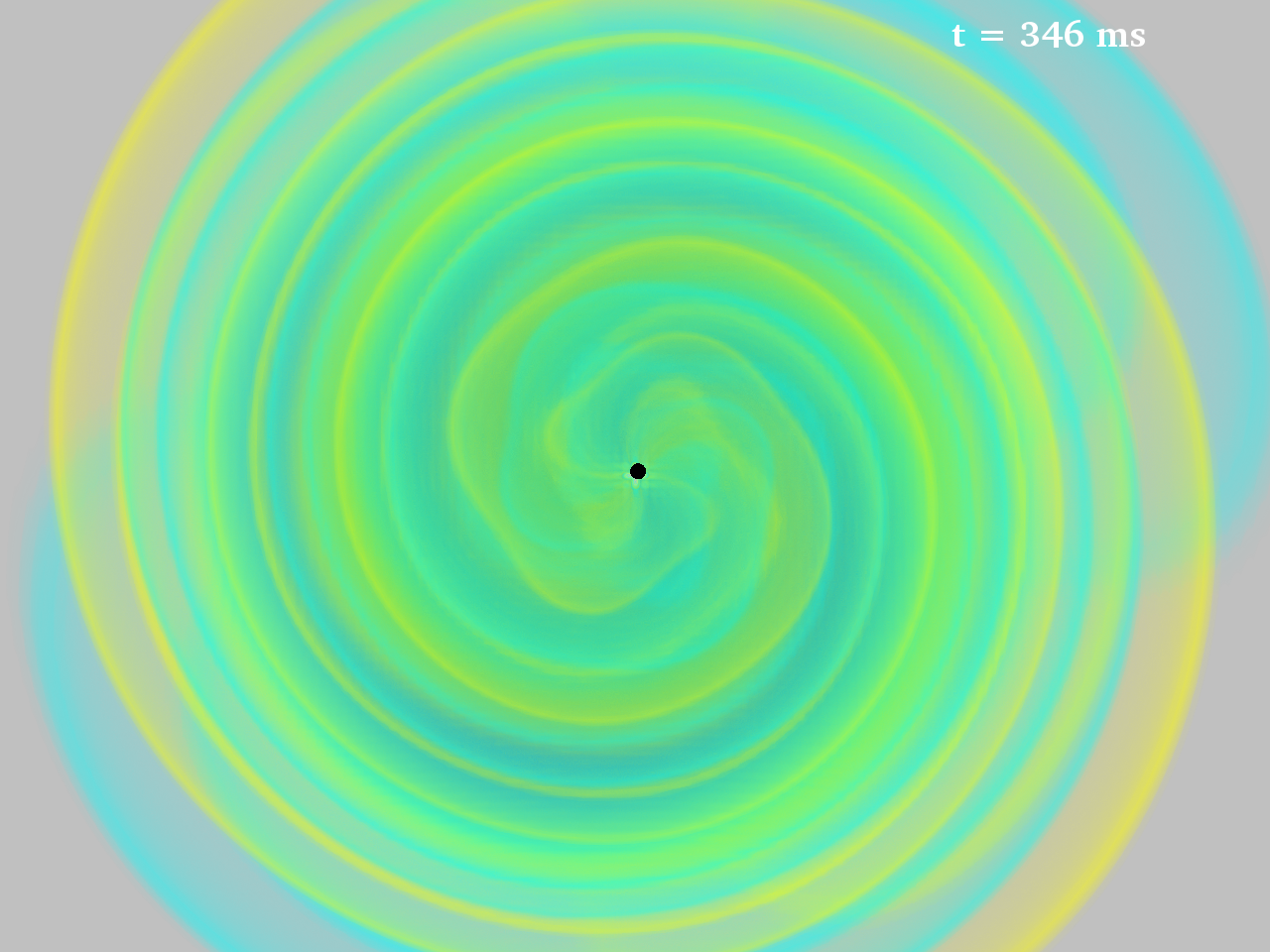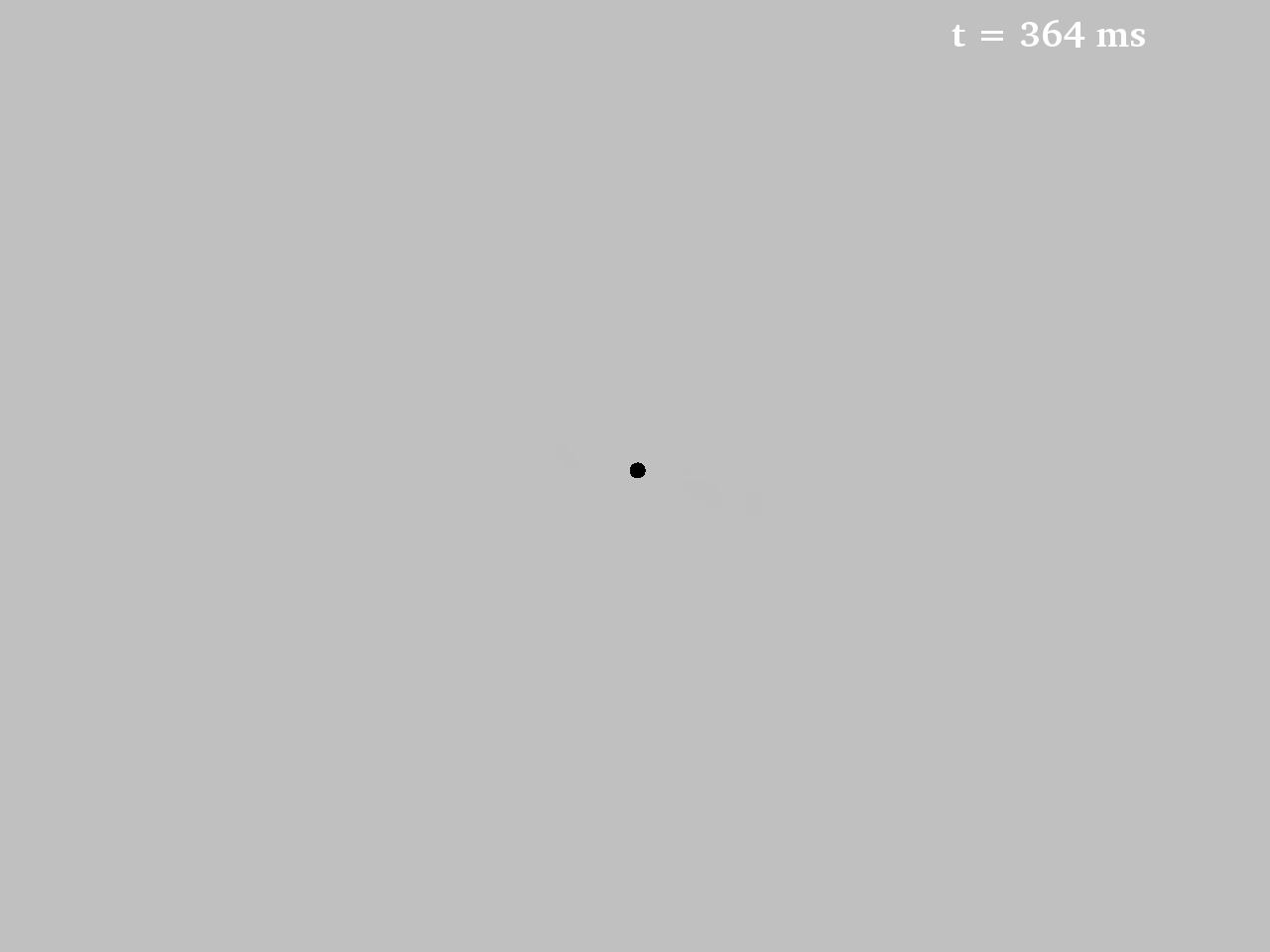Gravitational Waveforms

The gravitational wavetrain from a compact binary system may be separated into three qualitatively different phases: the inspiral, merger, and ringdown. During the inspiral phase, which takes up most of the binary's lifetime, gravitational wave emission gradually reduces the binary separation. The merger phase of the gravitational wavetrain is characterized by the inward plunge and coalescence of the black holes. Finally, ringdown radiation is emitted as the distorted Kerr black hole settles down. The h× polarization mode of the gravitational wave is shown below.
Gravitational-Wave Strain
Fig 2. shows a plot of the estimated gravitational-wave strain amplitude from GW150914 generated from the observed Hanford data. We compare our numerical relativity simulations with the results from the LIGO collaboration.
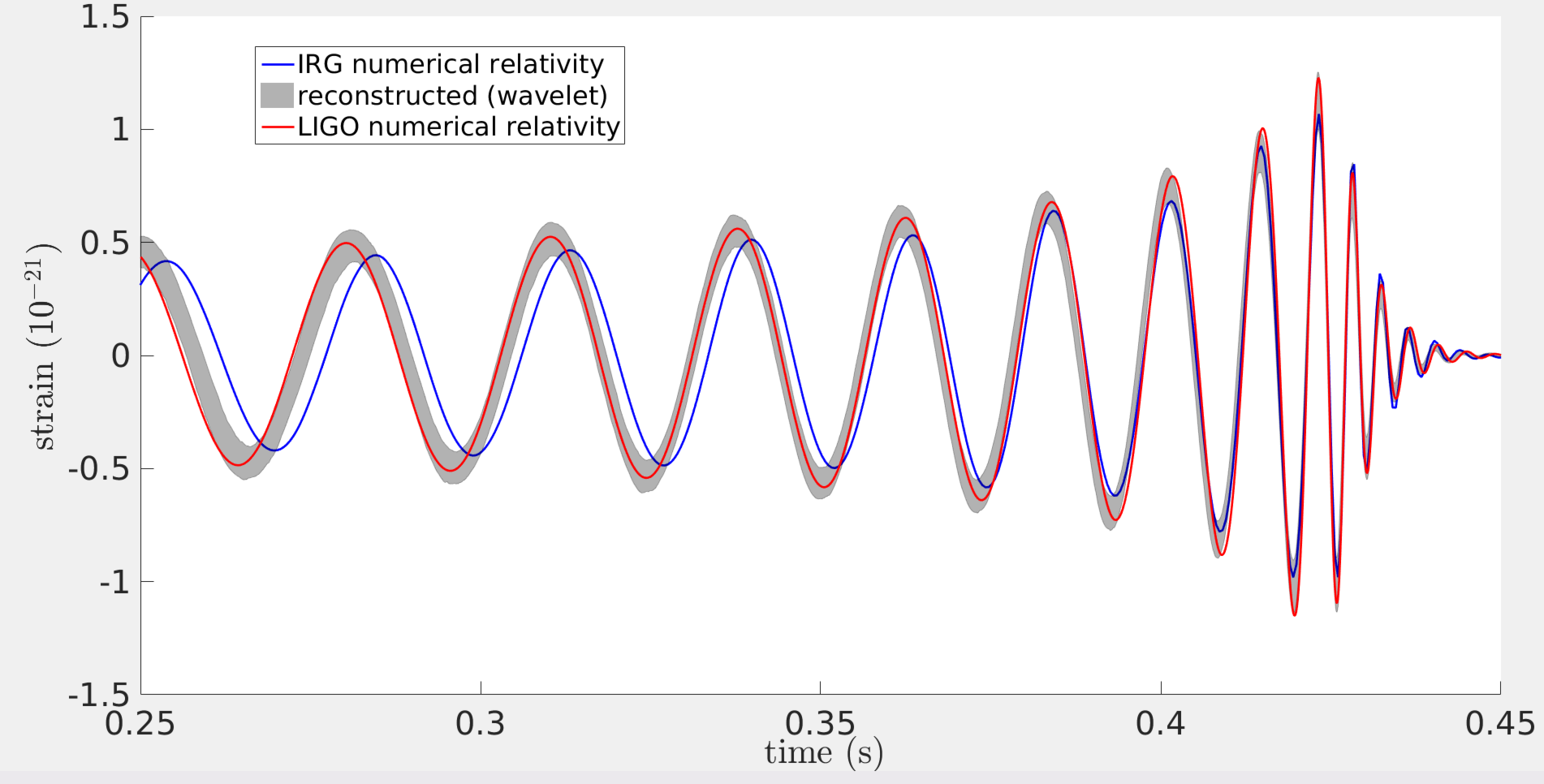
Fig. 2: A comparison plot of the Illinois GRMHD simulation (UIUC), the LIGO reconstructed waveform, and the LIGO numerical relativity (NR) waveform.
(Reference:
https://losc.ligo.org/events/GW150914/)
For a detailed description of how Fig. 2 was produced, see the link below.
Calculation of Gravitational-Wave Strain


